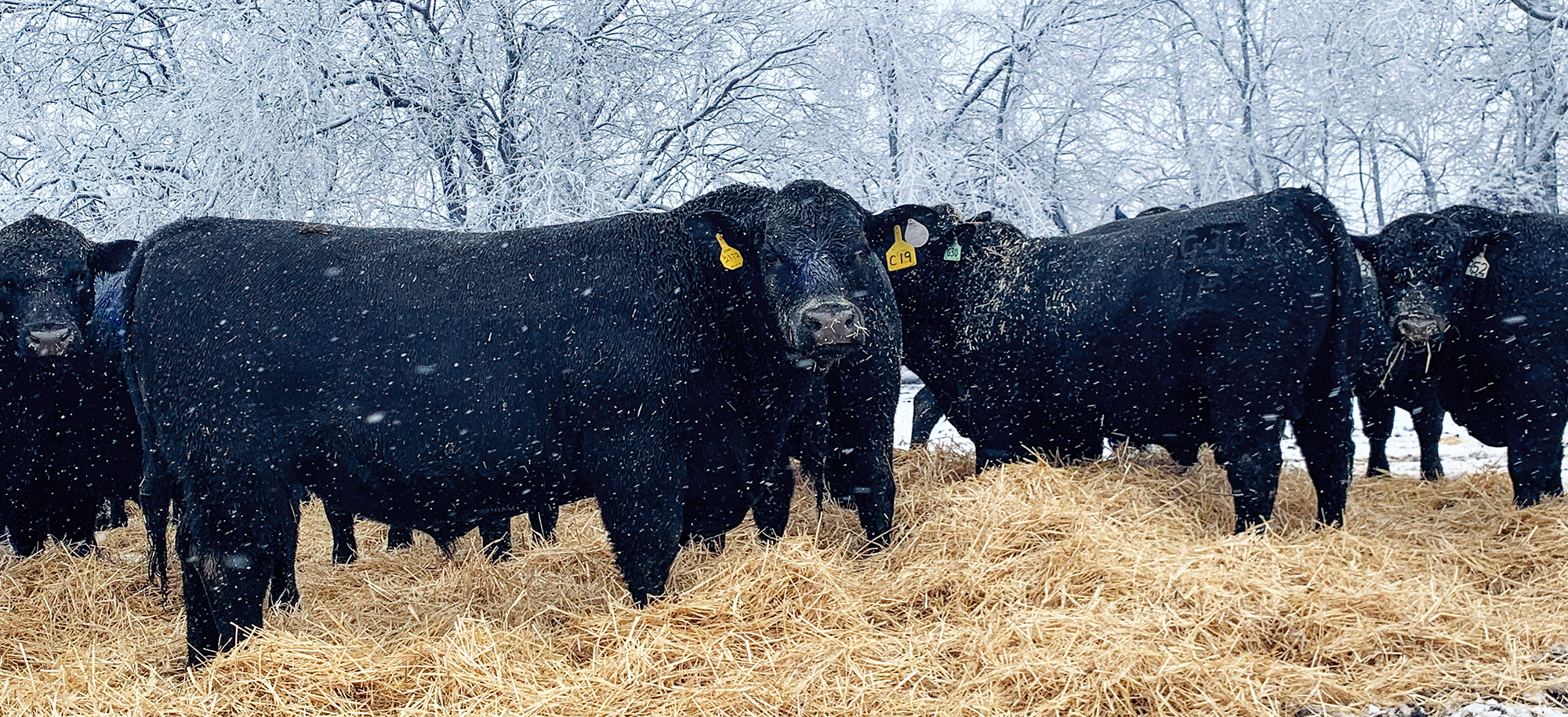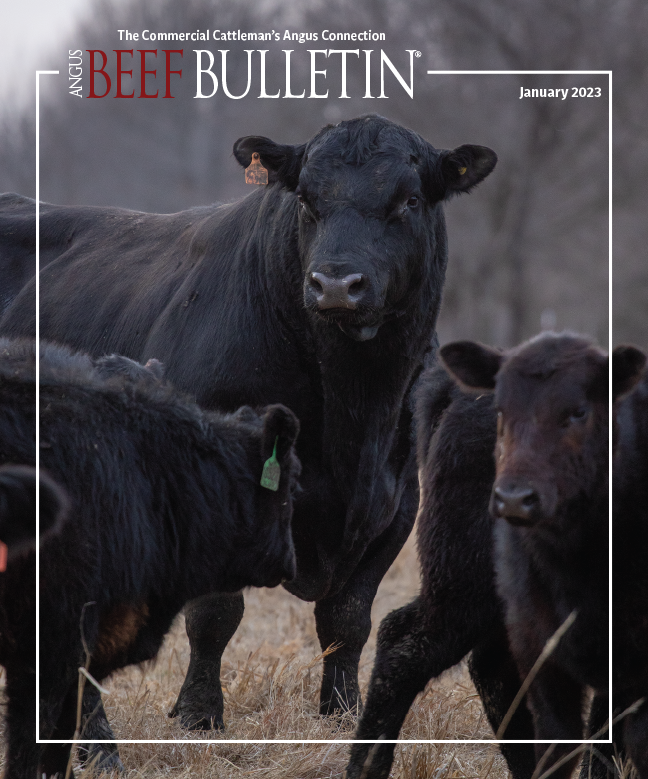
Winter Feeding for Young Bulls
This ranch feeds a palatable, high-quality forage ration to yearling bulls in the winter.
Kenny Hinkle of Hinkle’s Prime Cut Angus, near Nevada, Mo., says their program focuses on developing young bulls for sale. “Our development program is a little different from some, but the main thing we do in winter — without stockpiled fescue pastures — is to provide a high-quality forage and have it in front of those young bulls at all times to give them as much as they want to eat,” he says.
Hinkle says he prefers to feed all his bulls high-quality prairie hay. He adds a protein supplement because the prairie hay isn’t very high in protein, 6%-7% protein at best. Fescue hay tests better than that, but it’s not as palatable, and cattle don’t eat it as well.
It’s also hard to get fescue hay baled at optimum quality in Missouri; it might get rained on before it gets baled.
“Even though we are in fescue country, we use prairie hay in addition to grazing,” says Hinkle. “If bulls don’t have a high-quality forage in front of them, they want to eat something else, but we don’t want to give them any more starch or carbohydrates, because it’s not good for them.”
“We’ve fed bulls many different ways, for more than 25 years, and prefer the way we feed them now better than any other way we’ve tried,” Hinkle says. Young bulls do best out on pasture, moving around all the time and getting plenty of exercise as they grow. They are not penned up and not having feed dumped out for them.
Confinement feeding doesn’t work for his operation, says Hinkle. The bulls are not bunk-fed. They basically use a self-limiting feed for the protein, changing the consistency so they eat more, or less, depending on what they need at the time. The bulls can eat up to 1% of their body weight per day, but Hinkle doesn’t want them eating any more than that. He can change the palatability of that product weekly to adjust it to balance the forage, he explains.
In December, the yearling bulls being prepared for the March sale eat no more than 1% of their body weight per day, says Hinkle. “This is a 12% to 14% protein supplement. We want them to be eating all the forage they can eat. We’ve found that with high-quality, clean prairie hay, the bulls prefer to eat the hay; they like it even better than the supplement.”
This is a more natural diet, which is what they need. Sometimes bulls are fed too much of an artificial diet, says Hinkle. “We’ve been guilty of that, too, over the years. That was the way it was traditionally done.”
“Bulls really need exercise, however, and we want them out on pasture rather than confined,” he says. It’s important for bulls to be athletic and not “couch potatoes” when they have to go out and breed cows.
Hinkle’s pastures may only have 20 to 80 acres, but it’s enough to keep the bulls moving all the time.
He overseeds his pastures in the spring with “Red River” crabgrass. It comes up well and is a good forage for the bulls, he says, but during late fall through winter, it takes a lot of prairie hay to supplement it.
Editor’s note: Heather Smith Thomas is a freelance writer and cattlewoman from Salmon, Idaho. Lead photo courtesy Hinkle's Prime Cut Angus.

